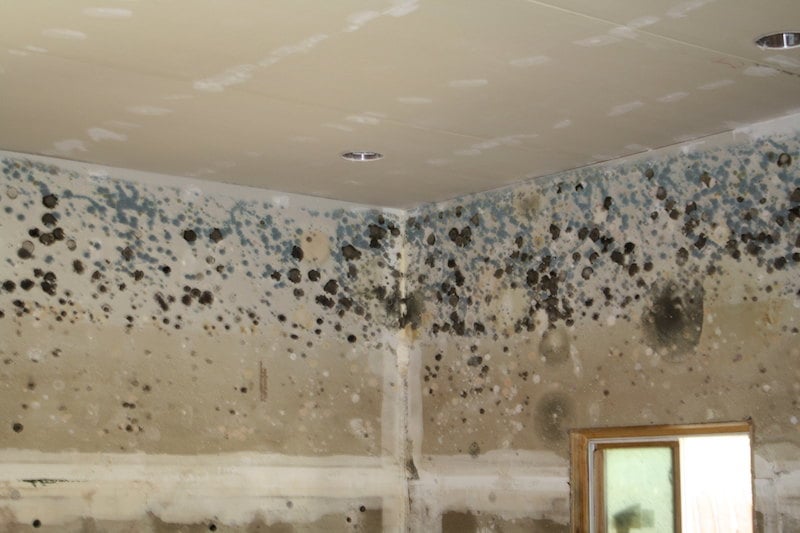
Mold is probably the last thing you want to find in your home. It may impact one’s health and can damage your home. It can also be hard to eliminate. However, if you are looking for the easiest way to get rid of mold in a house, your best option is to prevent it from forming. While getting rid of mold, make sure to use the right tools and follow the correct steps for the job.
There are many reasons why it’s essential to eliminate mold. Aside from the damage it causes and musty smell, mold may exacerbate or aggravate the health problems of your health.
In several studies, it was found that too much moisture promotes the growth of mold and associated with an increased prevalence of the symptoms because of infection, irritation, and allergy. It is best to avoid all of these things and get rid of the mold problem from your house.
Where Does Mold Come From?
Mold is a fungus that releases spores to the air. Mold spores can be everywhere, landing on the surfaces, and floating in the air. Each building and house in the world has mold spores.
There’s no way to eliminate mold spores in your house. Mold spores require particular conditions to become mold and these are darkness and moisture. It only means that you may avoid mold through preventing such conditions from happening in your home.
Mold is common in basements where humidity and groundwater seepage could make things damp. It’s also common in kitchens and bathrooms where moisture isn’t vented properly.
Anywhere you have leaks that aren’t cleaned promptly and fixed are the best place for molds, whether it’s a roof leak that leads to mold in your attic or plumbing leaks that cause your kitchen cabinets to be moldy,
Ways to Getting Rid of Mood
The first thing that you should do if you have mold problems is to determine if this is something you can deal on your own or you’ll need help from professionals. The mold that affects a 3×3 ft area or less can be remediated safely by the homeowner.
Bigger mold problems or molds that have spread to ducts in the HVAC system in the house require professional mold remediation. Professional mold remediation cost differs from one region to another and based on the scope and size of the mold problem.
But, it usually costs around $2,000. If you decide to hire a professional, see to it that he has years of experience and expertise in mold removal. There aren’t any government certifications that show if a company is reputable for mold removal. So, make sure to ask for referrals if possible. You should also read some reviews.
It isn’t necessary to test molds before getting rid of it, but mold inspections are needed. If you want to get rid of mold, you should know what types of mold you have in your house.
More often than not, you’ll spot black mold. While other molds produce toxins, there’s still more research required about the dangers of breathing toxins. However, most molds may present health risks like allergic reactions.
Getting Rid of Mold in Walls
If your walls are made from a non-porous surface like finished stone or wood, it should be dried thoroughly. Dehumidifiers, wet vacuum or proper ventilation may be used.
Cleaning products made for getting rid of mold are helpful. But, it isn’t necessary to use some biocides or bleach moldy areas. If walls are made from porous materials including unfinished wood, wallpaper or gypsum drywall, it isn’t possible to get rid of the mold from small holes and nooks in the wall.
The wall’s affected section should be replaced and cut out. This step can be a bit expensive, but the mold will come back otherwise.
Finish mold removal through the use of a vacuum with HEPA filter. Non-HEPA vacuum might not contain mold spores and may spread them to the air. Vacuum the whole area even if you can’t see mold. Never just paint over mold without getting rid of them. This will just make your paint peel and flake. If paint comes off, you’ll still have mold on the walls.
Getting Rid of Mold in Crawl Space or Basement
Getting rid of mold in such areas follows the same steps as for walls. But, in such areas, the cause of mold growth could be difficult to deal with. Overly humid basement or attic with poor ventilation can be moldy and damp. Resolving the problem in moisture that caused mold is crucial.
Take note that porous and soft surfaces that are contaminated with mold definitely have to be replaced and thrown away. Rugs and carpets are impossible to get mold-free completely.
While the process of mold remediation is dirty and time-consuming, it isn’t impossible for average homeowners to deal with it. Remember that mold spores can be everywhere, so you don’t have to eradicate each last spore.
Getting rid of the visible mold through drying the area as well as resolving what caused the moisture to start with are the steps to eliminate mold.
Thoroughly wipe down with a damp cloth and HEPA vacuum may accomplish most of your needs on mold removal.
Hire an Expert If Necessary
If the affected area of mold is more than 10sq ft in size, it might be time to contact an expert. Mold specialists can inspect the damage by collecting samples of air and swab.
These are sent to a laboratory so they can make some recommendations. Typically, professionals use antimicrobial coating for treating the area, dehumidifier to get rid of excessive moisture, and air scrub to eliminate mold spores.
The Verdict
There are several ways on how you can get rid of mold in your house. Depending on your mold problems, make sure that you determine the real cause behind them before you take action. There are various steps or approaches you can consider. All you need to keep in mind is to follow the steps properly and use the right tools if you don’t want to cause more damage to the affected area.
